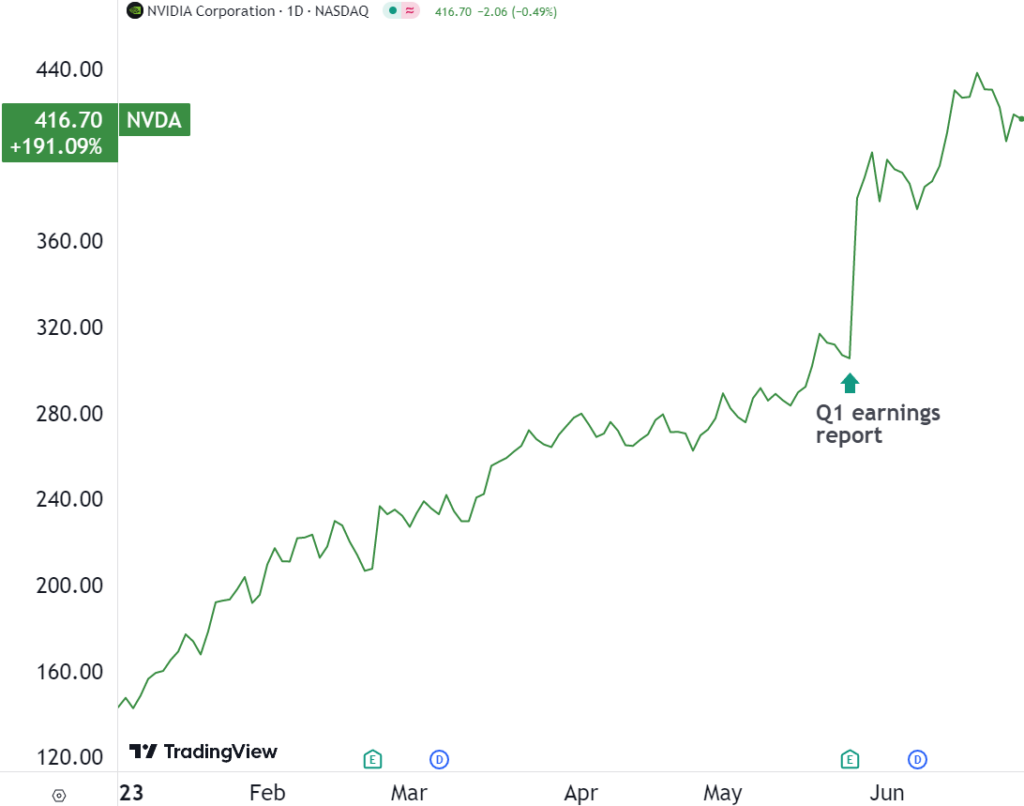In a new global AI race, the US is trying to keep a competitive edge through export controls.
Even in their current iteration, AI models are poised to augment productive output by orders of magnitude. And if that is the case, the geopolitical power alignment could shift drastically.
This is why the U.S. Department of Commerce seeks to limit China’s access to AI chips further. According to the Wall Street Journal’s report on Tuesday, these new restrictions could come in as early as next month. But didn’t the Biden admin already place such limits?
Nvidia in the Middle of USG’s Crosshairs to Stall China’s AI Progress
In August 2022, Nvidia filed its 8-K form to the SEC, revealing that the U.S. government (USG) imposed a new license requirement “for any future export to China (including Hong Kong) and Russia of the Company’s A100 and forthcoming H100 integrated circuits.”
Thanks to ChatGPT taking the internet by storm, these chips have become a hot commodity as they offer high-performance computing (HPC) necessary to scale AI demand. Nvidia CEO, Jensen Huang, described the role of GPU chips as ones better suited for generative AI (GAI):
“Instead of retrieving data, you’re going to retrieve some data, but you’ve got to generate most of the data using AI. So instead of millions of CPUs, you’ll have a lot fewer CPUs, but they will be connected to millions of GPUs,”
However, to defend its bottom line and fiduciary duty to shareholders, Nvidia released another suitable AI chip, the A800, in November 2022. Nearly equal in computing power to the A100 series, the A800 is a cut-down version of the A100, effectively shortcircuiting existing export restrictions to China.
Tuesday’s WSJ report on another export restriction responds to that evasion. Additionally, the USG would restrict Chinese access to cloud services. That makes sense because Microsoft Azure, Amazon Web Services (AWS), and Google Cloud use Nvidia’s chips for their data centers.
Therefore, even if Nvidia chip exports are restricted, China could still access Nvidia-powered AI computing.
Chinese Companies Rely on Nvidia Tech (for now)
By extension, this could hurt many Chinese companies, such as ByteDance (TikTok), that rely on Western data centers and storage solutions.
ByteDance ordered 100,000 chips (A100s and H800s) this year, worth over $1 billion. Likewise, Alibaba, Baidu, and Tencent have hurried to stock up on Nvidia chips, anxious about further export controls.
According to Reuters, the immediate side effect is a thriving black market in which A100s in China go for double their price, at $20,000 per unit. Expectedly, Chinese chip makers were boosted, but not by much.
Since Tuesday, Chinese Cambricon Technologies and Jingjia Microelectronics have increased by 2.6% and 4.6%, respectively. However, both stocks are down 15% and 9% over the week.
The Hint of Refreshed Export Control Exerts Minor Pressure on Nvidia’s Stock
Year-to-date, Nvidia (NVDA) stock is still up +191%. The pivotal momentum happened on May 24th, following the release of the company’s Q1 2023 earnings.

Conversely, Nvidia overshot Wall Street consensus by over 50%. The report also confirmed Nvidia’s shift from a video-gaming company to a data center supplier. This became evident from $2.24 billion in revenue from gaming sales vs. $4.28 billion in data center chip sales.
Nvidia’s CEO clarified that they “are significantly increasing our supply to meet surging demand for them.” But the latest USG-induced FUD could significantly cut that demand short. Consequently, Nvidia’s forecast-beating revenue model that boosted the stock could no longer be in play.
Nonetheless, since Tuesday’s WSJ article to press time, NVDA shares barely nudged, dropping by 1.23%. The “buy the rumor, sell the news” trading strategy seems to be in play. However, if new export controls come online next month, Nvidia will likely dip under the $1 trillion market cap threshold again.
—
Originally Posted June 28, 2023 – How New AI Restrictions May Throw a Wrench in Nvidia’s Plans
Disclosure: Tim Fries has no positions in any of the stocks mentioned, and has no plans to initiate any positions within the 72 hours following the publishing of this article. This article expresses the opinions of Tim Fries. Tokenist Media LLC has no position in any of the stocks mentioned, and does not plan to initiate any positions within 72 hours of the publishing of this article. Please consult our website policy for more information.
Join The Conversation
If you have a general question, it may already be covered in our FAQs. If you have an account-specific question or concern, please reach out to Client Services.
Leave a Reply
Disclosure: The Tokenist
Neither the author, Tim Fries, nor this website, The Tokenist, provide financial advice. Please consult a licensed financial advisor prior to making financial decisions.
Disclosure: Interactive Brokers
Information posted on IBKR Campus that is provided by third-parties does NOT constitute a recommendation that you should contract for the services of that third party. Third-party participants who contribute to IBKR Campus are independent of Interactive Brokers and Interactive Brokers does not make any representations or warranties concerning the services offered, their past or future performance, or the accuracy of the information provided by the third party. Past performance is no guarantee of future results.
This material is from The Tokenist and is being posted with its permission. The views expressed in this material are solely those of the author and/or The Tokenist and Interactive Brokers is not endorsing or recommending any investment or trading discussed in the material. This material is not and should not be construed as an offer to buy or sell any security. It should not be construed as research or investment advice or a recommendation to buy, sell or hold any security or commodity. This material does not and is not intended to take into account the particular financial conditions, investment objectives or requirements of individual customers. Before acting on this material, you should consider whether it is suitable for your particular circumstances and, as necessary, seek professional advice.


























great job save investors by great informative education
Thank you for the positive feedback!